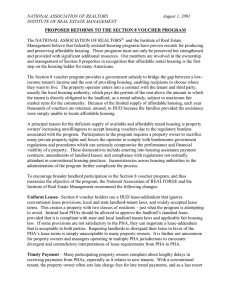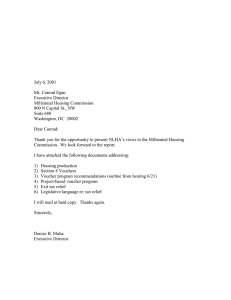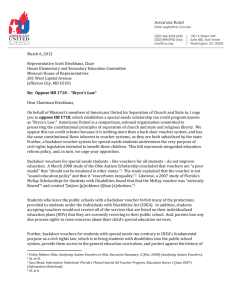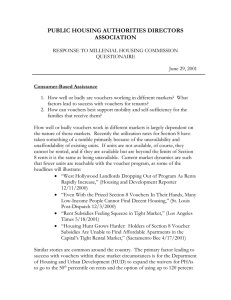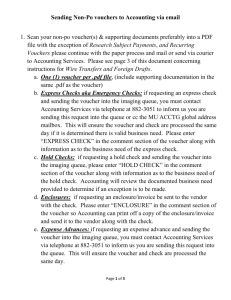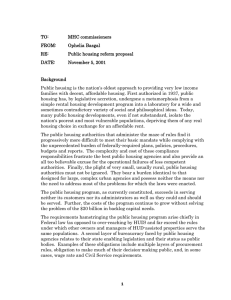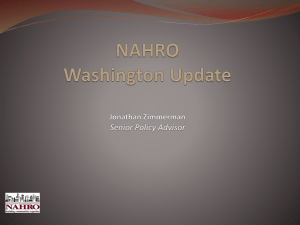The Section 8 Housing Choice Voucher Program
advertisement
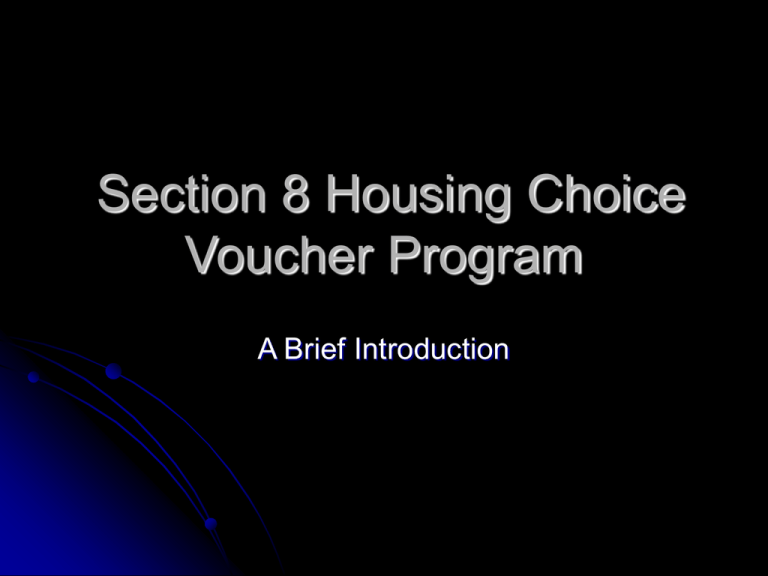
Section 8 Housing Choice Voucher Program A Brief Introduction The History of the Section 8 Housing Program 1937 US Housing Act focused on PHAs building, owning and managing housing. By the 1970’s, the public housing stock stood at approximately 1.2 million units. Mid-1970’s, Congress pushes a new housing policy channeling housing resources to private owners to build and maintain affordable housing. It becomes Section 8 of the US Housing Act and creates two forms of subsidy: project-based with 20 year contracts tenant based Program Today Section 8 is the largest rental subsidy program in the country. 2.1 million tenant based units authorized 900,000 project based but decreasing States with the highest number of units New York- approximately 300,000 California- approximately 350,000 Program Today Who’s served in the tenant based program? 64% are families with children 15% elderly 13% persons with disabilities Majority live in non-poverty census tracts Eligibility - Who Qualifies Income Eligible Primarily based on income, adjusted for family size The income of 75% of the new admissions into the program must be under 30% of area median income: Alameda County One person - $17,400 Two people - $19,850 Three people - $22,350 Four people - $24,850 Five people - $26,850 Six people $30,800 Partnerships and Controlling Documents Voucher, Lease and Contract Property Owner Housing Authority Tenant Income Eligibility and Rent Calculation Income based rent rent is calculated at 30% of adjusted income minus a HA established utility allowance ExampleAdjusted monthly income $719 X 30% =$216 Utility allowance is $46 $216 - $46 = $170 tenant monthly rent Section 8 Reform Proposals Housing Assistance for Needy Families (HANF) & Flexible Voucher Programs 2004 HANF Program Components Participation was optional 2004 was to be the transition year PHAs would continue to administer Section 8 program while States prepared to take over $100M set aside for state capacity building Program Administration State housing agencies PHAs, or other entities (preference to faith based entities) Administrative Fees capped at 10% of the budget authority HANF Program Funding $13.6B Number of families served to be the “same” based on renewal funding 2.077M vouchers authorized for FFY 2003 Renewal funding provided for 1.91M vouchers $36 million for 5500 incremental vouchers for non-elderly disabled persons living in public housing units that are designated for the elderly (not an increase in units) $72 million for Family Self Sufficiency Coordinators Program Specifics…few! Housing was the only authorized use of $’s Current participants would be grandfathered into HANF program “Majority” of vouchers for ELI families Modeled on CDBG (entitlement communities) Earnings cap to transition families out of program Annual Adjustment Factor amount unknown 2005 Flexible Voucher Program Basic Design Return to the dollar-based voucher approach –don’t cap number of families. Simplify statutory and regulatory design. Give much more flexibility to PHAs. Continue the program as tenant-based rental Continue homeownership option Continue project-based option in a more streamlined fashion, e.g. PHA does not have to get HUD approval for location. Program Administration Program to be administered by the current administrators/PHAs. HUD to focus on measuring a few, basic performance measures --utilization of funds, number of families served, financial management --not processes. In cases where the PHA fails to or is no longer willing to administer the program, HUD to select another entity to administer the program. Flexible Voucher Funding Funding to be proportionate to funding received by the PHA in FY 2004 Subsequent funding to be adjusted by an inflation factor 2006 Proposal No details yet Likely to be similar to the 2005 Flexible Voucher Program

